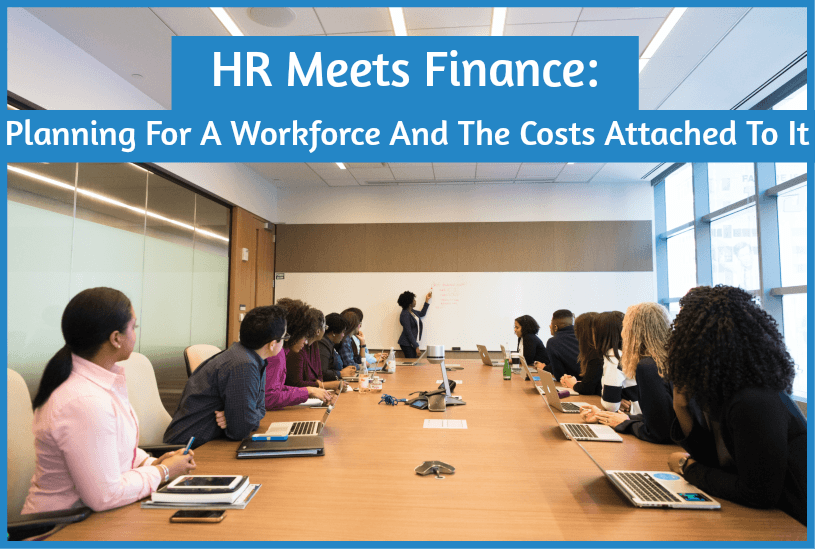
HR Meets Finance: Planning For A WorkForce And The Costs Attached To It
Human Resource Management is more than simply recruitment, production hours and dismissals. As you launch your business, finances will be one of the main themes around your plans. It will impact your marketing plans, your production schedule and even the amount of employees you start off with. Establishing an HR budget stems from your overall business budget which is influenced by the business’ access to finance. This is one of the main things on a new entrepreneur’s mind when starting a business.
Since a business’ HR department performs a myriad of functions, so should its attached finances. In fact, this only underlines the importance of a strong relationship between the financial and human resource functions in an organization, and the need for well thought out planning when it comes to funding a workforce.
The Finance And HR Relationship
Here’s why finance and human resources should be best friends: simply put, both departments are working towards one overall goal. The Society For Human Resource Management estimates that businesses spend between 18 and 52 percent of your operating budget on employee remuneration yet HR professionals only spend 15 percent of their time managing labor costs, according to a Paycor survey. While it may seem that the two functions are contrasting at times, management teams of both units must be prepared to think beyond their department classifications.
For financial managers, the human resource department is more than simply a cost unit (although it is classified as such in the books). It is also about keeping your employees happy and loyal, thereby reducing employee turnover, raising productivity and motivation and reducing costs. Therefore, it requires you to weigh the pros and cons of spending on items such as performance motivators against the benefits the business may incur. After all, the workforce of a business plays a key part in its success.
Recruitment: Establishing A Budget For Attracting New Talent
One of the main costs to plan for when budgeting for your workforce is the costs of setting up that workforce. The average cost per hire is estimated at $4,000 but can vary according to the position level, with some executive positions costing over $5,000 to fill.
The recommended amount on a new hire is between 16 and 20 percent of the employee’s starting salary.
A recruitment budget should encompass costs such as vacancy notices, assessments needed during the recruitment process and even development and maintenance of a business career page on its website. More businesses are also including the costs of financial background checks including past payment histories or any past attempts to secure private financing worldwide that may impact their job performance. If an external recruitment agency is being used, the costs of their services will also be covered here (typically around 20 percent of base salary).
A good point to start is by acquiring an estimate of the number of employees you intend to begin with.
Financially, you must be able to access a great return from the spending in these categories. This is where recruitment metrics come in handy. Comparing the costs incurred from using recruitment agencies to the number of employee prospects the business received is one way to tell if this recruitment channel is worth it. Keep in mind your recruitment budget should be accompanied by a hiring plan which entails recruitment guidelines, recruitment strategies and job/ employee descriptions for intended positions.
Retaining Talent: Set A Price On The Perks And Employee Loyalty
It is not enough to attract the right talent; you must be prepared to keep them and this comes with costs attached. Employee turnover can significantly impact your profit margins. In 2019, 2.3 percent of employees left their jobs according to the U.S. Bureau Of Statistics.
The current job market presents optimal conditions for employees to switch employers and thanks to the record number of openings, competition in the workforce department is fierce. Therefore, businesses need to invest more in keeping their current workforce happy and satisfied. This aspect of the budget contains more than monthly salaries for workers but also will account for financial incentives such as monthly bonuses or year-end performance bumps to employee salary.
Spending a bit more in this area can actually be saving your business money as well. Here’s why: business take an average of 51 days to fill a vacant position according to Allied Workforce Mobility Survey and the average cost to replace an employee can be between 16 percent of annual salary for those earning $30,000 and 213 percent for executive positions. During this time, productivity is decreased thanks to the loss of one employee. There is also the recruitment costs attached to filling the position and of course, the severance package for the exiting employee.
Being Financially Smart In HR: Keeping The Workforce Costs Low
Although there are valid reasons to invest in a business’ workforce, there must still be a balance between keeping the workforce happy and striking a great financial deal. Keeping employee costs low should be a focus, just not to the expense of the employee (or the business). One way to achieve this is by being creative with your business’ employee retention strategies.
Offering flexible work patterns are a great way to cut cost and is actually being requested by more employees at work. In a 2018 Deloitte and Timewise survey, 60 percent of workers said they wanted a range of flexible options offered at work. Alternatively, launching employee socials or family oriented events a few times a year can make employees feel valued or even holding meetings to hear their input on company plans and decisions gives them a sense of being heard and involved.
Striking the balance between your business finances and your workforce goals can sometimes be a tricky process. However, keep in mind that it is an ongoing process and therefore it is continuously adjusting. While it may make financial sense to keep your HR costs to a minimum, it could negatively impact your profit margin and business sustainability in the long run. After all, your human resources are just as important as your financial resources. However, smart financial habits dictate removing unnecessary spending to achieve optimum returns.
Therefore it is all about striking a balance and what works for your business.
© New To HR


